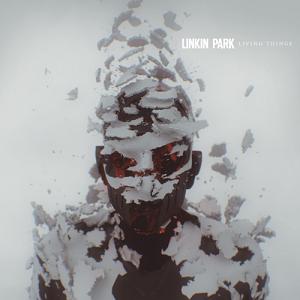
Always recognize talent when you see it. Even if what is produced does not tickle your fancy; any artist that can make a name for themselves has to have talent or a brilliant formula for putting their names on the map. Linkin Park fits in this category. Except now there is a reason to respect and like the band.
Forgive my tardiness to Linkin Park's album "Living Things" (LT); it came out in 2012. The first single "Burn it Down" was a track with which I had a month long fling. I admit that my heart is stolen on a weekly basis with a number of different songs. Take that confession with a grain of salt. "Burn it Down" prompted me to give LT a few listens. It failed to charm my pants off as the single had.
Like most Top 40 hits, the charm of "Burn it Down" eventually wore off. Fast forward to the present. Somehow the track appeared on my workout playlist. My limerence was revived. It was like flipping through my blackbook and finding that hot, one night stand I never but should have called back.
Like any smartphone lamprey, I researched LT. I discovered that Rick Rubin shared production with Mike Shinoda, LP's guitarist and vocalist. Being a huge fan of Rubin's work (Metallica, Slayer, Red Hot Chili Peppers), I replayed the album. It got many more deserved plays and just as many recommendations.
You can now consider me charmed and naked from the waist down. This is more than limerence.
LP fell into the nu-metal trend of singer and rapper. Except LP had broad attraction partly because they excluded profanity from their lyrics. This made them mother-approved listening for the ride back from school. Like nearly every early 00's rock band, they had an obligatory turntablist, further adding to the universal appeal. As an added bonus, the band's musical director, Mike Shinoda, delivered emo lyrics through rapping. This made LP okay for hip-hoppers to bump and rattle their windshields with. All of these factors made Hybrid Theory (HT) an undeniably ground-breaking album that made nu-metal more mainstream. The numbers speak: HT went diamond in 2000. Even in the era of buying physical albums, selling 10 million-plus of them was a big deal.
| Nu-Metal in a nutshell |
Skip ahead to 2003. Nu-metal is out of style. There were very few exceptional nu-metal bands that survived. LP was one of them. Where other bands of the genre failed to stay relevant, LP succeeded and maintained a consistent fan base. LT at seals that notion of relevance at least on an artistic level. LP's once mismatched combinations find a comfortable resting position here. The cheese that littered the band's earlier efforts becomes absent or well-hidden. What we get is a wave summation.
Verses are traded off elegantly between singer and rapper. Both are downplayed but not tamed, allowing vocals to sink in with an omnipresence of dark-wave. Shinoda still raps but takes on a more sing-song delivery and is much more relaxed ("Until it Breaks"), melting into the music rather being a novelty. Great synergy feeds between the two vocalists (Victimized). The two vocal approaches make the emo lyrics sound at least good. Bennington, the singer, even finds different outlets while preserving his iconic style. There are many instances where voice-engineering works to his advantage: "Lost in the Echo" has his voice engineered with skips that fade into wispy turntable scratches.
Mike Shinoda and Rick Rubin share the production job very well. Rubin delivers trademark thrash but conflicts with Shinoda: the band maintains their individuality. This marks the band and Rubin's third collaboration and is undoubtedly the best. The sound is consistent, using shimmering, dreamy bedrock. Hard tracks that drop with metric tons of dissonance are heavier than ever with electronica.
Yet these tracks effortlessly maintain thrash integrity. "Lies Greed Misery" plays like a buzz saw and is completed with electronic skips and jitters. The chorus' singing is muffled with fuzz, the rapping pulls back on the coda and then recoils like a handgun at the last minute with Bennington's jarring scream. "Lies" is but one example where the plunge into more electronic plays to the band's advantage. On heavier tracks (Victimized, Burn it Down), there is an ongoing hum, hidden behind hailstorms, a prime example where the two producers liase exceptionally. Even though Victimized is an obvious punk track, electronics still lurk in the shadows while the drums haul. "Burn it Down" has a basal heart and ringing, siren repetitions that emulsify with the bass and guitar works. As the single, it embodies everything that LT is and does well.
| Shinoda (Left) and Rubin |
The DJ settles in with the production. Hahn clearly has talent, making his engineered noises palatable and organic. Where things are meant to sound artificial, Hahn blends them in nicely with everything human-made. Instead of resorting to obvious samples, there's strata of ambient laters, well-woven keyboards and synthesizers ("In My Remains"). The scratching is at a minimum. When it is there, its subtle but lacquers the crevices. Many tracks enter inconspicuously with clean electronics but end up going in opposite directions: quietly or as a riptide. It's a motif that finds a solid footing.
Industrial, dark-wave, metal, rapping. Say what you will about nu metal. LT is melodic and ethereal but remembers what it came for: to kick you with steel toes. "A Thousand Suns" may have been the band's concept album but everything on LT is airtight. It is not just a collection of singles but a cohesive, dense album.








0 comments:
Post a Comment